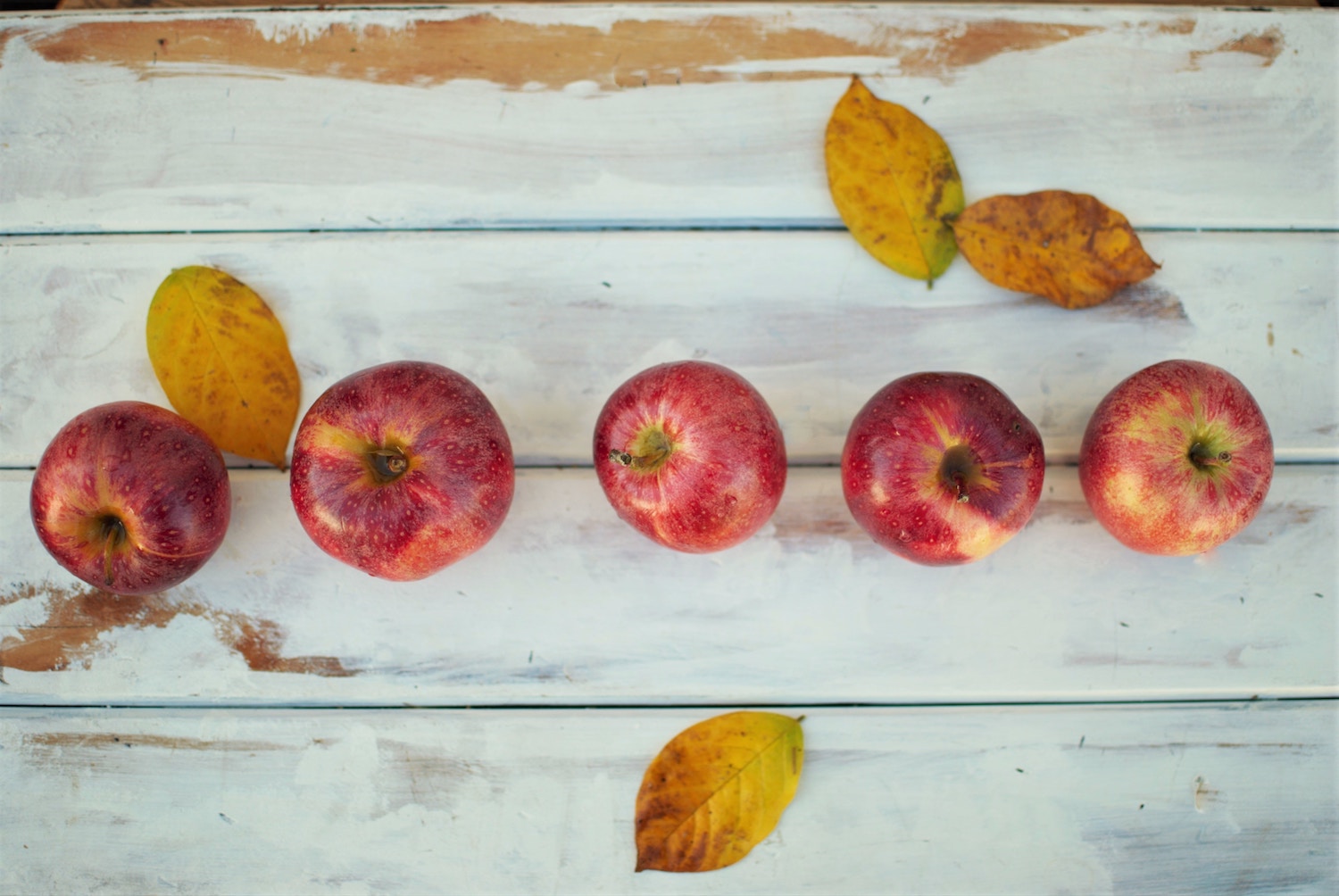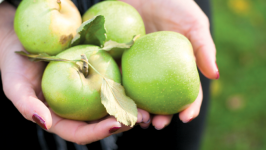Honeycrisp Apples: A Story of Obsessive Love
Food has always comforted me. As a migrant from Australia, my old comfort foods were not available after coming to live in Queens. A friend handed me a copy of How to Eat by Thich Nhat Hanh. Hanh’s message to approach whatever and whenever we eat mindfully, that is, we should be fully aware that we are eating, proved powerful. In his book, Hanh suggests to look at food and see the earth it grew in and the sky that watched over it. Doing this transported me to a cherry orchard I visited with my family as a child. I saw myself running through the dappled light in the orchard, plucking a cherry from a tree and experiencing the explosion of sweet, aromatic flavor as the cherry hit my tongue.
In reading How to Eat by Thich Nhat Hanh and practicing mindful eating I felt what the Welsh call Hiraeth, which means “homesickness for a home to which you cannot return, a home which maybe never was; the nostalgia, the yearning, the grief for the lost places of your past.” Far from being left alone, I am part of a group of millions of people who were all yearning for their mythical home, and childhood food, even as they embraced their new place. The stories that came to me helped me take my place among Queens’s migrants. These stories comforted me, and I hope, they will comfort you too.
I’m a food skeptic from way back. I’ve lost count of the times I’ve railed against the Industrial Food Complex, GMOs and sterile, hybrids seed varieties. But not today; this is an ode to a monster even Frankenstein could love: the Honeycrisp apple.
I first encountered this laboratory creation on a visit to the Midwest one fall to visit my son, then a student at the University of Chicago. Pointing to a crate outside his local supermarket, I wondered what these perfect specimens could be. He rolled his eyes. “Apples," he said.
This didn’t do them justice. They were just that little bit rosier, their skin a perfect balance of red and green; they were shapely and enticing. I offered this observation. He shrugged.
But I knew I was onto something. I grabbed an apple and paid for it immediately, taking a bite before the transaction was complete. What I experienced was what you get if you close your eyes and imagine an apple –- hard, crisp, juicy, tartness balanced by the exact right amount of sweetness. And they had that fresh-off-the-tree taste, that you only get in the autumn.
When I was a kid my dad had a Jonagold apple tree. In my memory his apples tasted like Honeycrisps. Certainly, they made even the seasonally fresh store-bought apples taste mealy in comparison. But only the reckless would bite into dad’s apples. Those of us in the know attacked them with a knife cutting into the flesh and examining each slice before eating. As Dad put it, “Finding a codling moth caterpillar after you'd taken a bite of an apple isn’t a problem; finding half a caterpillar is.” Honeycrisps, on the other hand, never have the smallest blemish, let alone grubs.
In Kangaroo Flat, the small town in rural Australia where I grew up there was a limited range of apple varieties, and those there were lacked the history, mythology and symbolism of American apples. To us they were just another fruit. How wonderful to come to the US and discover that the apple is revered.
When I first arrived the abundance of lore around this ancient fruit made up for the limited number of varieties available in the supermarket. Even more interesting, the humble apple was entering a renaissance with old varieties like Pippin and Northern Spy on the verge of a comeback.
My first Honeycrisp was everything I'd ever wanted in an apple, but supermarkets in Queens hadn’t heard of it. Resigning myself to this being a Midwestern miracle, I tried to put them out of my mind. It was a losing battle. From the moment I tasted that perfect apple it become the standard by which all others were judged. I craved its fresh, crisp, juicy flesh. Like an Evangelical incarnation of Eve waiting for the serpent, I was wonton. No other apple would suffice.
As if my yearning had appeared on some distributor’s radar, the next fall I found Honeycrisps in a fancy food store, but alas only for a glorious short season. The Industrial Food Complex is relentless, however, and within a year or two my beautiful monster was available everywhere, year-round.
Oh, apple of engineered perfection. Sterile, hybrid, but irresistible. I crave them still and will pay any price for them. Honeycrisps are not an apple, they are APPLE. They’re flawless, immaculate, pure; they’re sirens, they are temptation, each a clone of the other. Even my son, a man of tepid endorsements at the best of times, was moved to nod his head and say, “It’s not bad.”








